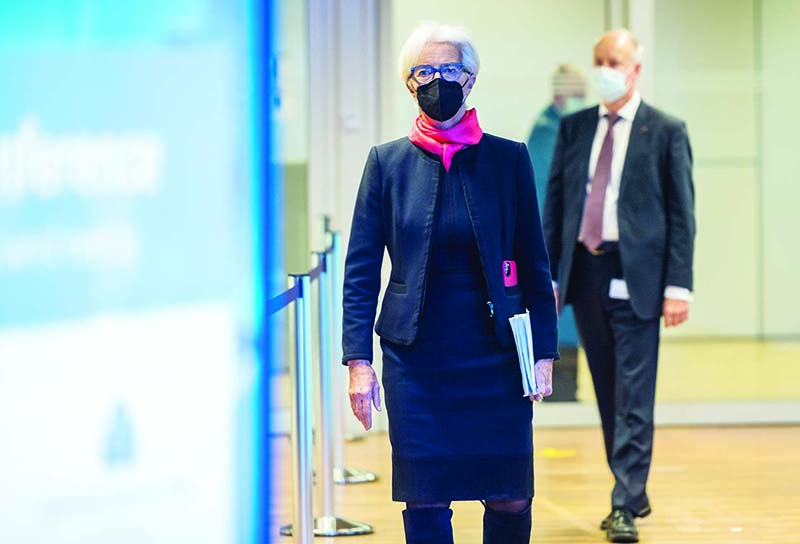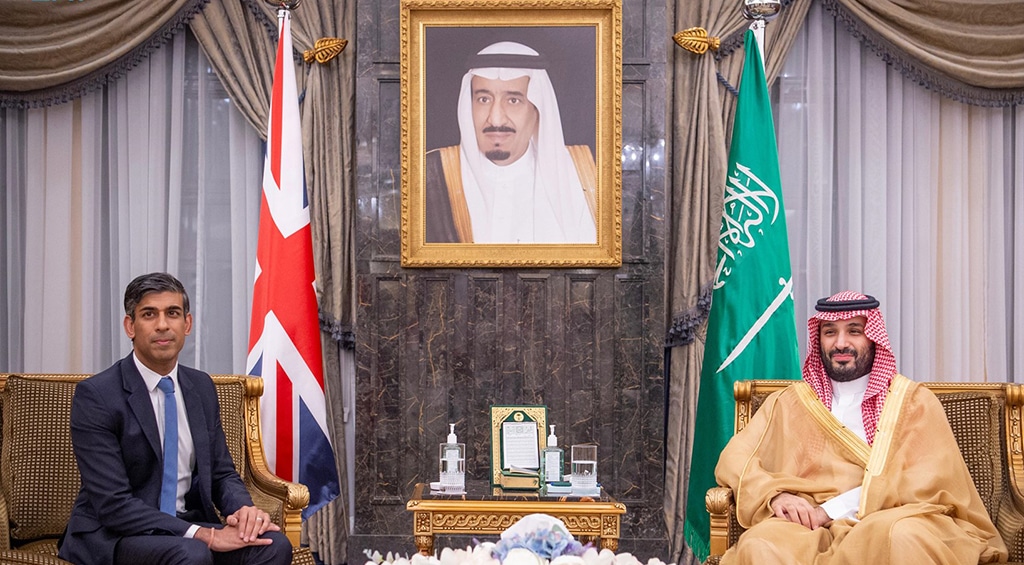 FRANKFURT: European Central Bank (ECB) President Christine Lagarde (left) arrives to address a press conference following a meeting of the governing council of the ECB on the eurozone monetary policy in Frankfurt am Main, western Germany. — AFP
FRANKFURT: European Central Bank (ECB) President Christine Lagarde (left) arrives to address a press conference following a meeting of the governing council of the ECB on the eurozone monetary policy in Frankfurt am Main, western Germany. — AFP
FRANKFURT: The European Central Bank yesterday lowered its growth forecast for economic growth in 2022 to 4.2 percent from 4.6 percent previously, as supply bottlenecks hamper the economic recovery from the coronavirus pandemic. The ECB now expects the eurozone to grow 5.1 percent this year, up from 5 percent in the previous forecast, President Christine Lagarde said. Growth in 2023 would be 2.9 percent, up from the previous forecast of 2.1, after which the pace would fall to 1.6 in 2024.
The ECB said yesterday it will end its 1.85-trillion-euro ($2.1 trillion) pandemic-era bond purchasing programme (PEPP) in March but ramp up a pre-crisis asset buying scheme to soften the transition and bolster the eurozone economy.
The ECB will wind down the pace of PEPP purchases in the first quarter of 2022 and “will discontinue net asset purchases under the PEPP at the end of March 2022”, it said in a statement. The pandemic emergency bond-buying program, currently hovering up around 70 billion euros worth of assets every month, is the ECB’s main crisis-fighting tool, aimed at keeping borrowing costs low to stoke economic growth.
To avoid an abrupt drop in its bond buying in March, the ECB raised the pace of purchases under its pre-pandemic asset purchase programme (APP).
This would be increased in the second quarter from April 2022 to 40 billion euros, and reduced to 30 billion euros in the third quarter, the ECB said in a statement. The ECB underlined the importance of “flexibility” in its monetary response and said that PEPP purchases could be resumed “to counter negative shocks related to the pandemic.” The bank also left its interest rates at historic lows, including a negative deposit rate that means lenders pay to park excess cash at the central bank. The Bank of England earlier surprised markets with an unexpected rate hike to tame soaring inflation.
2024 in focus
While the ECB has up to now described the spike as “transitory”, attributing it to one-off pandemic related factors, inflation in the 19-nation euro region has progressed at a rate that has exceeded observers’ expectations. In November, prices rose 4.9 percent year on year in the eurozone, a record in the history of the single currency. The emergence of the more contagious Omicron variant has raised fears of more pandemic-related disruption, aggravating supply bottlenecks that have pushed prices up faster and hampered economic growth. ECB President Christine Lagarde will share the bank’s latest economic forecasts in her press conference at 1330 GMT, including the first predictions for 2024. Last updated in September, the bank expected the economy to grow by five percent in 2021, 4.6 percent in 2022 and 2.1 percent in 2023.
On the inflation side, price rises were expected to be 2.2 percent in 2021 for the whole year, before dropping under the ECB’s two-percent target for the next two years at 1.7 and 1.5 percent. Recent pressure on prices could lead to “the largest ever upward revision to inflation in 2022, from 1.7 to 2.7 percent”, according to Frederik Ducrozet, strategist at Pictet Wealth Management.
The focus will be on the new number for 2024, said Andrew Kenningham of Capital Economics, “the nearer this is to two percent, the closer the bank will be to raising rates”.
But a lower figure would allow Lagarde to continue to argue that the spike was a passing phenomenon, paving the way for a more gradual easing of economic support. —AFP




